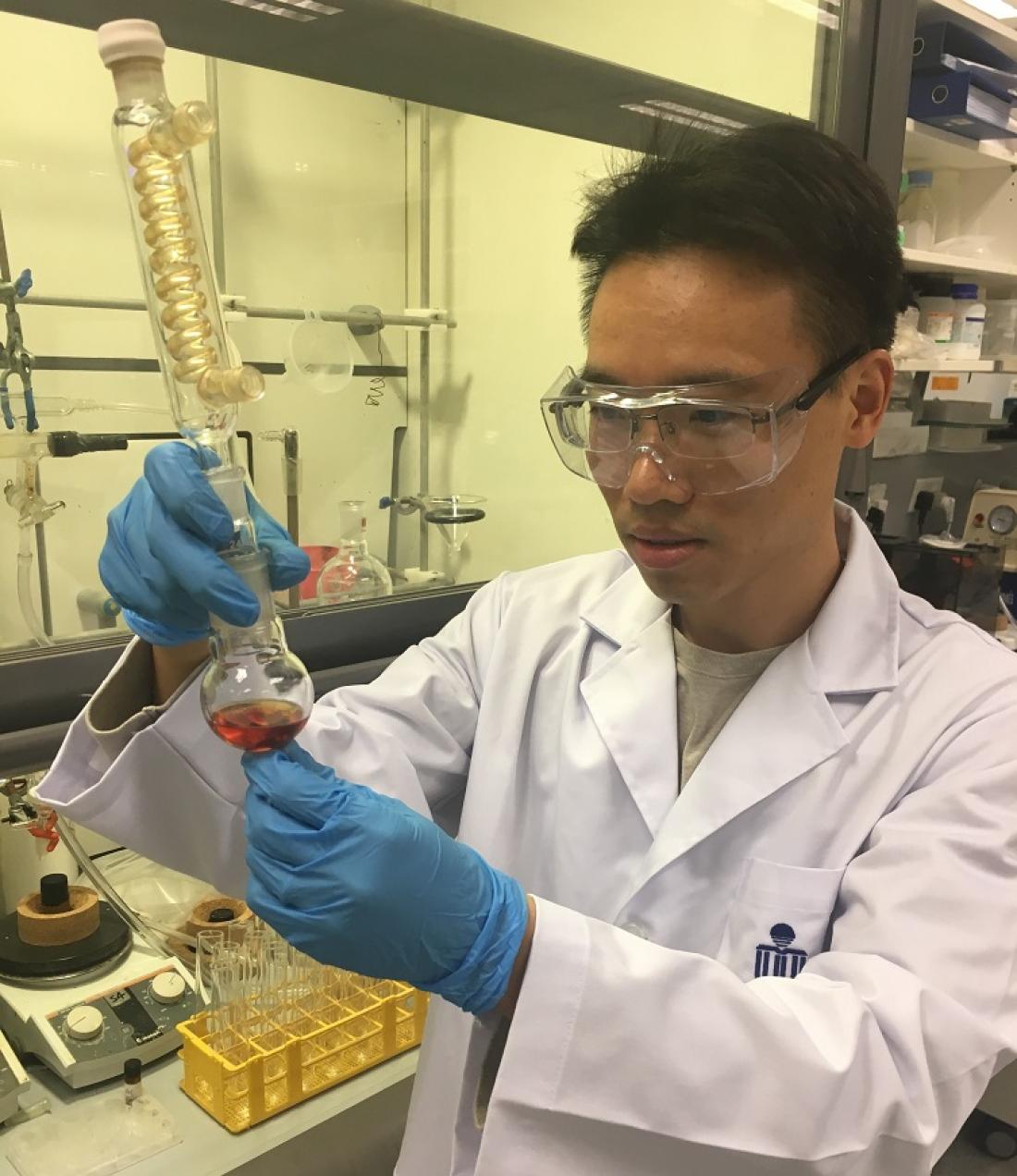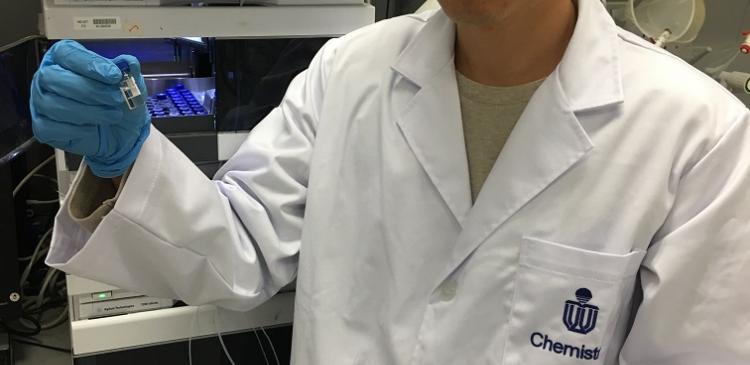Prof Sun’s team has discovered that chiral allenes can be produced through organic catalysis using racemic propargylic alcohols.
A research team from the Hong Kong University of Science and Technology (HKUST) has discovered a more efficient and eco-friendly way to produce a family of chiral molecules, which would potentially bring down the cost of chiral medicine and make them more accessible to all.
Over half of the approved drugs now in use in the world are chiral, which treats a wide range of conditions including cardiovascular, respiratory and gastrointestinal diseases. Many chiral drugs are top sellers including high-cholesterol medicine Lipitor, and antibiotic Amoxicillin. But production of chiral drugs are difficult and costly, as the production process is complicated and requires rare and expensive raw materials in general.
Now, a team led by Prof Jianwei Sun, Associate Professor of the Department of Chemistry, discovered useful methods that could result in a more efficient and affordable production of the drugs.
“Chiral molecules contain subunits which are like ‘twin brothers’, they have extremely similar, mirror-like architecture but may exhibit distinct traits in our body,” said Prof Sun. “These ‘twin components’ are particularly hard to separate, and it is costly to get just the useful part out of the two, Chiral allenes represents an example of this type which were made by the very expensive chiral raw materials.”
Prof Sun’s team, however, has discovered that chiral allenes can be produced through organic catalysis using racemic propargylic alcohols, which is cheap and easy to come by, the catalyst is also recyclable and reusable without having to create metal wastes.
“Our method is not only more economical and friendly to the environment, such green catalysis could also have profound impact in health care as drug companies may be able to create and develop chiral drugs in a cheaper and more sustainable way,” said Prof Sun.
The findings were recently published in Nature Communications.
Chiral drugs have a fast growing market. The market size has jumped nearly four folds to around US$800 billion over the past decade and is still growing. Last year, more than two thirds of the newly developing drugs are made of chiral molecules.




